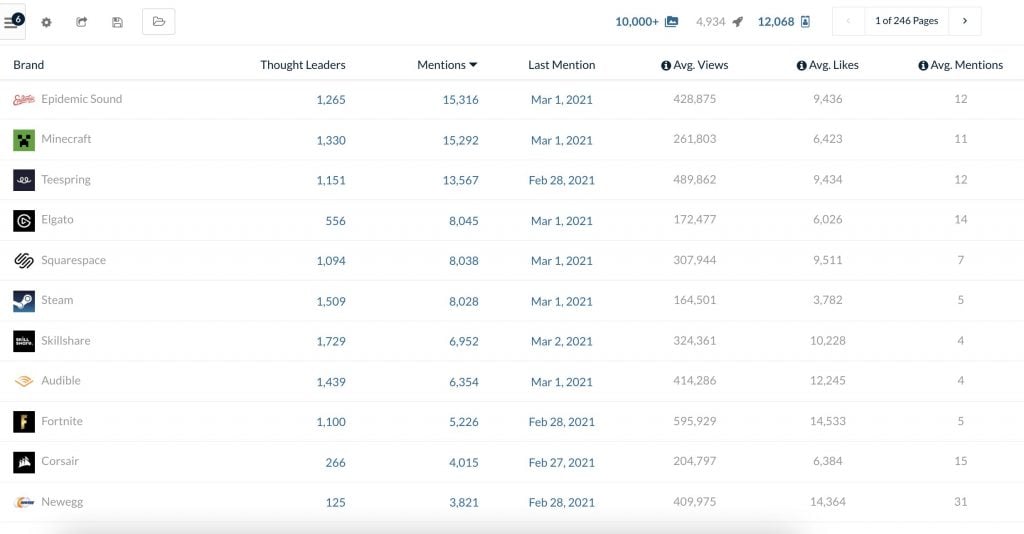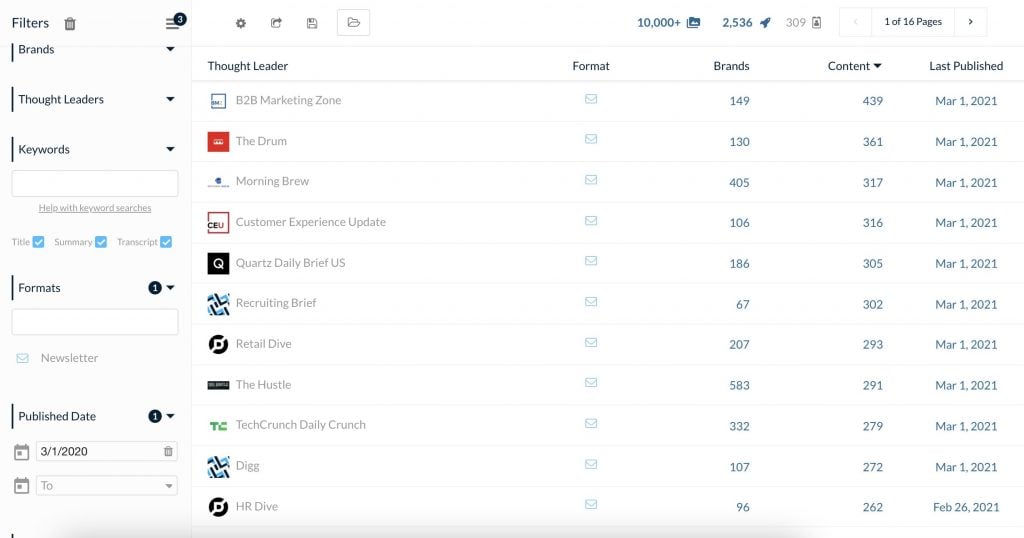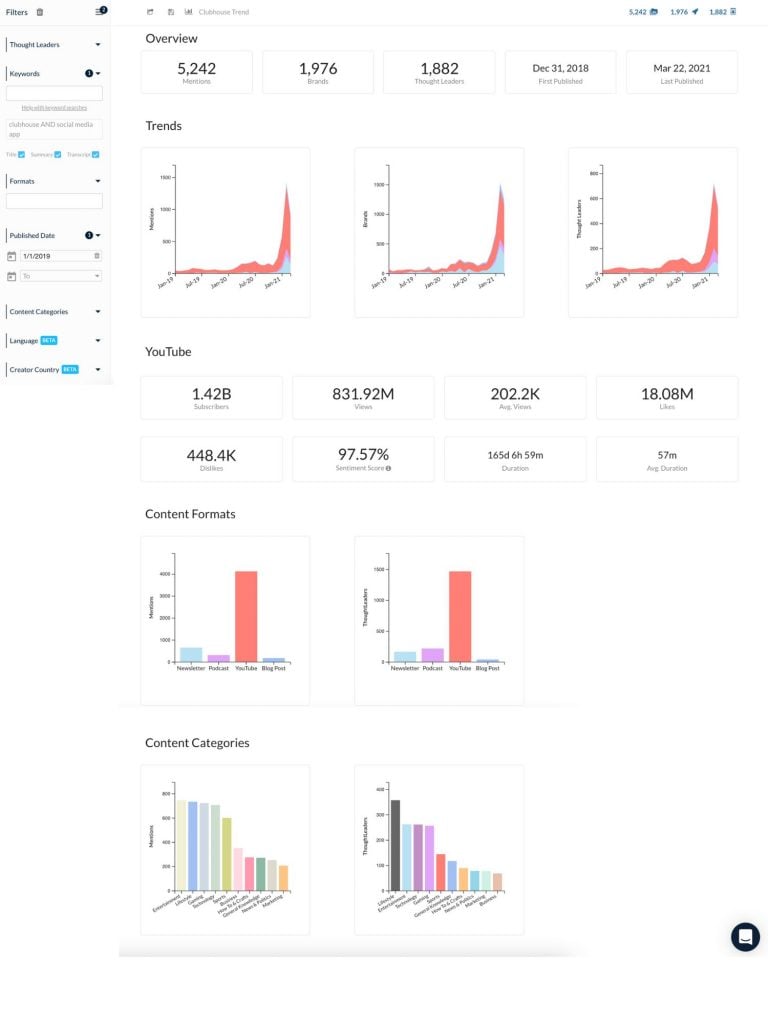
They say that necessity is the mother of invention, a cliche that holds true more often than not. It’s definitely true here, because the origin of ThoughtLeaders is rooted in the needs of one of its co-founders, David Tintner. Tintner was also the co-founder (and editor in chief) of the online magazine Hacking UI, which caters to a community of developers and entrepreneurs. As its name implies, there is a good deal of focus on the user interface, and how that informs the user experience. As Tintner tells it, his problems were twofold.
First, there was the matter of sourcing good content for their newsletter. Hacking UI is its own entity, creating its own content, but for its newsletter they include links out to other articles of interest for a broader perspective. Finding something of quality to link to became challenging—vague searches for things like “user interface” or “good website design” yield far too many results to effectively sift through. Instead, Tintner knew there were certain authors or bloggers who always had something valuable to say, and he wanted to be able to track these specific people and their content across multiple channels.
Second, and more importantly, he ran into a problem when it came time to monetise the site. Plastering banner ads and overlays all over a page that’s got an article about improving the user experience seemed incredibly counter to the Hacking UI mission. As they started adding some sponsored content everything coalesced and the idea clicked.
In 2017, Tintner along with Daniel Conn, Hacking UI’s Director of Business Development and Michal Sela, CTO to the business, co-founded ThoughtLeaders as a direct result of those experiences with Hacking UI. They solved their own problem, so they figured why not solve similar ones for other companies with a SaaS platform? And while they were solving these problems for brands, they saw an opportunity to make things easier for creators, as well. This is the one of the more unique aspects of a platform that would stand out for many uncommon features. Many others make promises of tools to help creators understand their own value, theoretically giving them some leverage in negotiations. Very few give creators the opportunity to dive deep into the analytics of the brand’s marketing efforts. ThoughtLeaders doesn’t just help creators understand their own value, it helps them understand how to fit that value into what brands are already doing.
This is why it’s almost reductive to call ThoughtLeaders an influencer marketing platform. Sure, the goal is to complement and boost influencer marketing campaigns, but that’s not all it’s good for. The company itself refers to what their platform does as “Sponsorship Intelligence,” which is a far more precise label. Brands can find all the influencers they like, but if they don’t know what to do with them the whole enterprise turns out to be fruitless. Likewise, creators can field offers to solicit interest in brands, and they can gain a holistic understanding of what the brand is looking for, the better to custom tailor their proposals to.
Summary:
Pricing
Access to the ThoughtLeaders platform is achieved by buying into one of three subscription tiers they offer. Pricing for each is customised, based on a customer’s size, and all come as an annual subscription.
- Basic — 1 format (the type of content), unlimited brand pages, unlimited thought leader pages, 3 month content history, unlimited reports, content feed, summary report, chat-based support
- Pro — All of the above, but in all formats, and with a monthly custom insights report
- Enterprise — All of the above, but content history goes from 3 months to all time, weekly custom insights report, prospecting recommendations, export unlimited Thought Leader reports, campaign management
The Details
ThoughtLeaders is broken down into two main sections: Intelligence, where all your research is done and the not-at-all-excitingly-named Internal, where you put all the intelligence you’ve just gained into action. Your Intelligence searches start in one of three categories: Content, Brands, and Thought Leaders (the on-brand label for influencers, but a thought leader could also be a publication or other entity that behaves like, well, a thought leader).
Within the Content subheading, you’re searching for—wait for it—content. This can be done by any combination of things like keywords, categories, publish date, brands, and influencers to name a few. Most useful is the ability to filter your search down to only “likely sponsored” posts. The ThoughtLeaders algorithm searches for clues in each piece of content it’s indexed that suggest the content is an ad. If you’re thinking that sounds a little vague and wishy-washy—likely sponsored? searching for clues that merely suggest?—then you’re not taking into consideration the games that both brands and creators sometimes play to appear more authentic and less like a paid ad. You simply can’t rely on everyone to disclose the truth, and the ThoughtLeaders algorithm acts like a vigilant bull•••t detector in ferreting out any and all content that has a whiff of sponsorship. The good news here is that, along with the search results, the platform shows very clearly why a particular piece of content ended up in that list.

You can see in the screenshot above that ThoughtLeaders highlights the probable sponsorship in question. The “Content” column shows snippets of the caption that point to a sponsorship, and the Brands column tells you who’s involved. If the search result is from YouTube, you can look through a transcript the platform provides to see exactly where in the video the sponsorship happens (i.e. where someone mentions the name of the company or product). The timestamp on the transcript is a link that will bring you right to that moment to view.

Never heard of the brand in question? No problem. ThoughtLeaders has the data on them, too. You’ll get an overview of what/who they are, along with some basic stats about them: whether it’s a public or private company, the number of employees, and their category, for example. The reporting also goes into their social presence—what’s the reach? how many impressions?—and lets you in on things like how many influencers they’ve worked with, how many mentions they get, and their marketing “inventory”—an estimation of how much they’ve spent to advertise on social. There’s data on which formats they’ve used to advertise, and a graph showing performance trends of those formats. There’s also a list of influencers and channels they’ve worked with—along with how much the estimated spend was—which is incredibly helpful for anyone using the platform.
If you’re the brand in question, you’ll get a view of your marketing that you’ve not had before. If you’re a competitor, you can see what you’re up against and strategise accordingly. And if you’re an influencer, you can find information that you can leverage toward future collaborations. Showing up to a negotiation prepared with data that informs your proposal is definitely going to make you stand out. There’s even contact information for the decision makers responsible for buying ads and sponsorships, if you’re bold enough to send unsolicited collaboration proposals.
The way ThoughtLeaders switches back and forth between these perspectives is seamless. If you’ve searched for content as described above—let’s say you were looking for videos that talk about fitness—you’ll get results showing you all the content that matches. Now, if you’re a brand, you can click through to show a list of influencers (Thought Leaders) that match the criteria with a statistical overview of each (like how many brands they’ve worked with, or how much content they’ve made for them, for example. Click on each influencer and you can get an overview of their channel, with links that take you to reports detailing all of their content and all the brands they’ve worked with. You can also run comparisons of them with other influencers. On the creator side, you can look at all the brands that match what you’re searching for. Platforms like this talk about making it possible to market at scale, and with ThoughtLeaders, creators can market their own selves at scale to multiple brands just by doing a little research.


Of course, with all this data, you need a little context, too. As an “intelligence” platform, you get a lot of reporting out of ThoughtLeaders. A lot of that reporting is just raw data: numbers, facts, and figures are always good to have at your disposal. But with so much raw data, it can be overwhelming to make sense of it all, which is why the platform’s Trends reports bring so much more value to the table because they provide all-important context to the proceedings. It’s great to know that, say, an influencer you’ve decided to work with got thousands of mentions in the last month. But without context that number doesn’t mean a lot. Those thousands of mentions mean vastly different things depending on what came before it. If, in the three months before, the monthly average was in the hundreds, this is an influencer on the way up. If the monthly average was in the ten-thousands, you might be a little late to the party.

Armed with all this knowledge, brands will be more and better equipped to make media buying decisions to meet their marketing needs. Creators, on the other hand, will be more and better equipped to offer their wares to brands. For those on the purchasing side, brands, Thought Leaders offers integrated solutions for media buying, as a managed service offered with the Enterprise plan. Creators can work with ThoughtLeaders directly for assistance in connecting with brands.
Conclusion
The idea of business intelligence is nothing new, but the spinning off of that idea into “Sponsorship Intelligence” is the invention of ThoughtLeaders. Theirs isn’t the only platform designed to empower brands in the pursuit of better and more authentic marketing, but the laser focus on intel means they’ve done it more precisely and thoroughly than competing solutions.
Offering media buying as a managed service has its ups and downs—some companies don’t have the time or personnel to put in the legwork of connecting with creators and soliciting proposals. But some do, and a purely self-service version of this integrated into the platform as a default would only broaden the appeal of what is already a very broadly appealing product.
As it isn’t designed to be an all-in-one, end-to-end solution means that it will make a complementary fit into many different environments. It also means that the makers of this platform were able to focus all their attention and efforts on ThoughtLeaders' core mission. The result is a platform that is all the better for it.
ThoughtLeaders.io
-
Features
-
Ease of Use
-
Reporting
